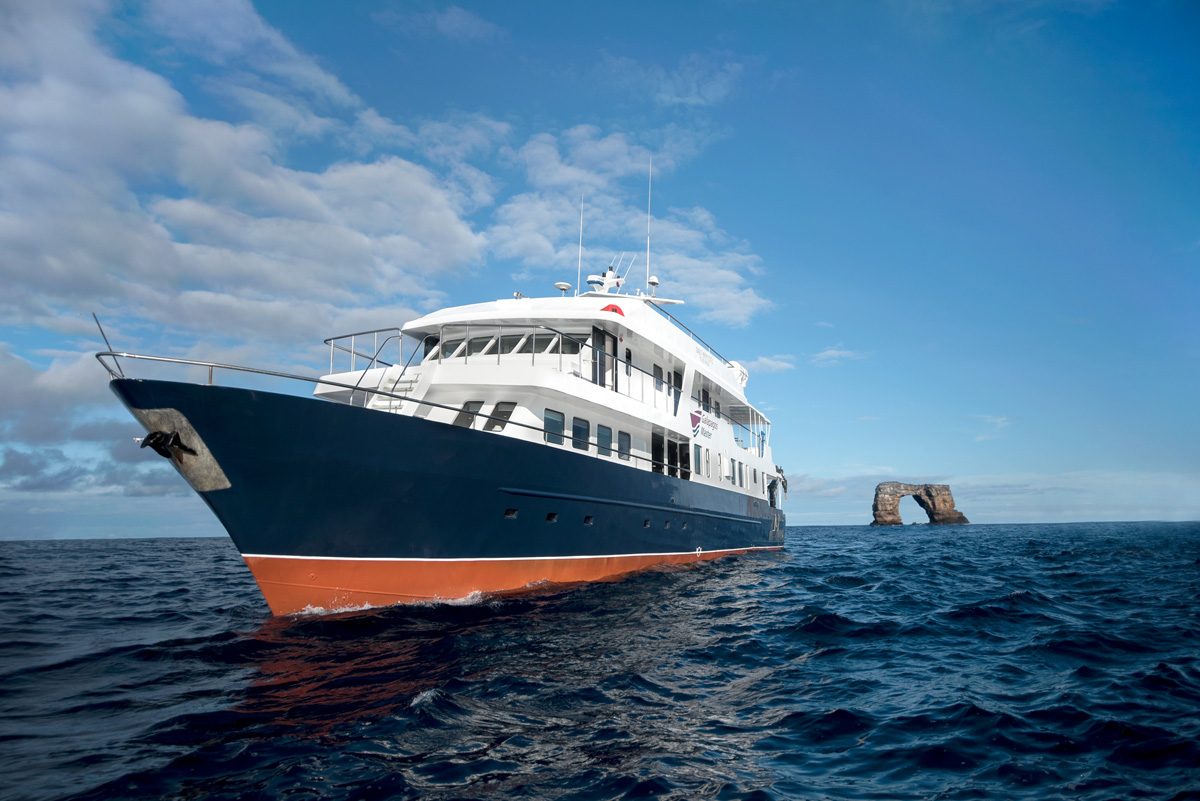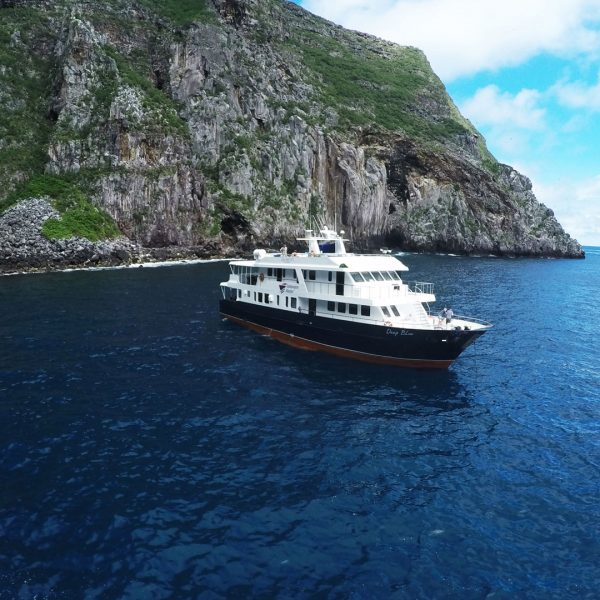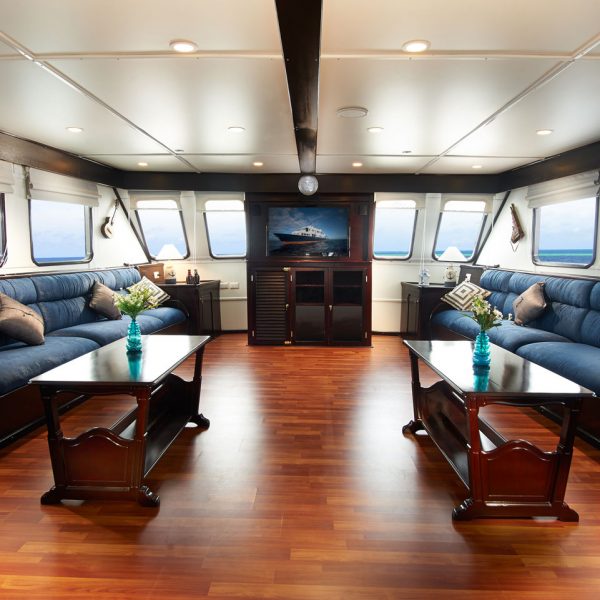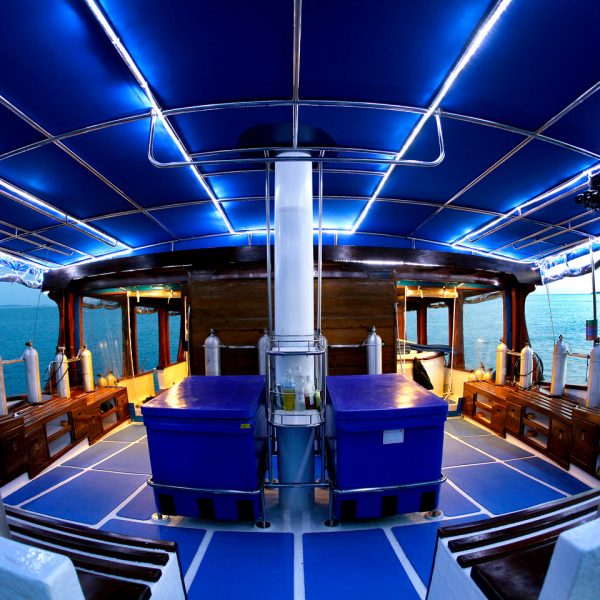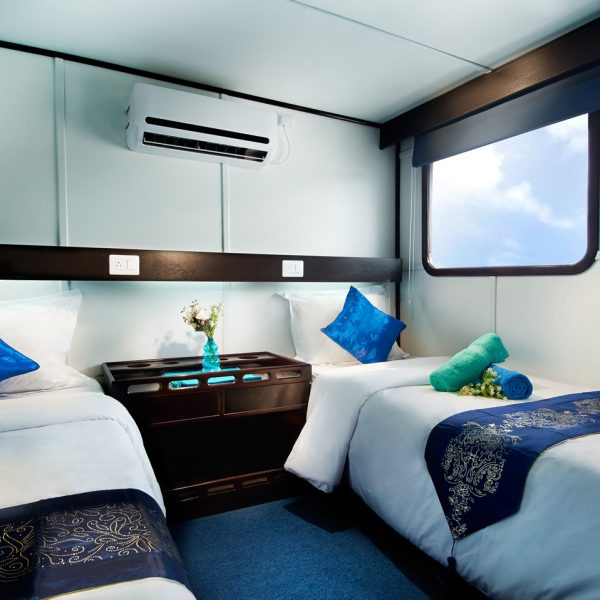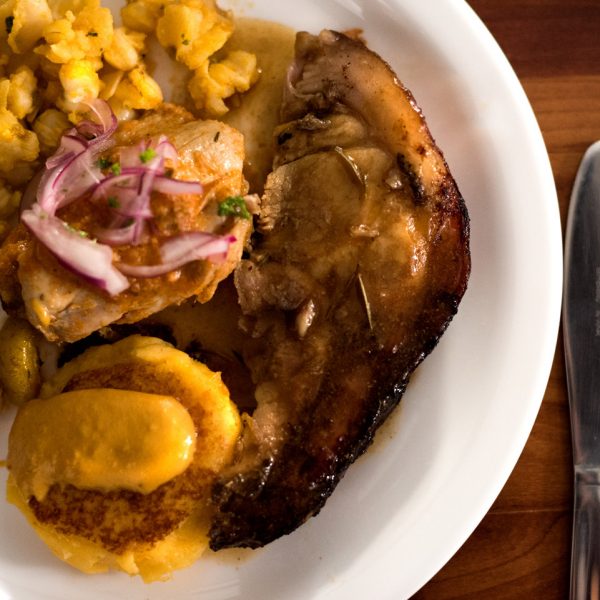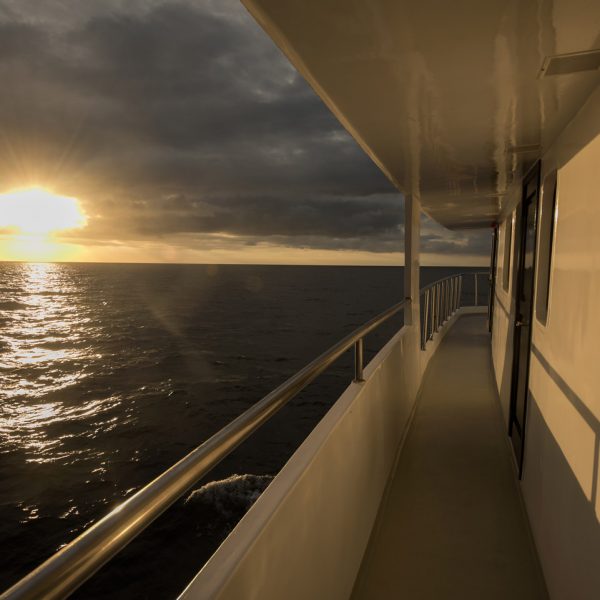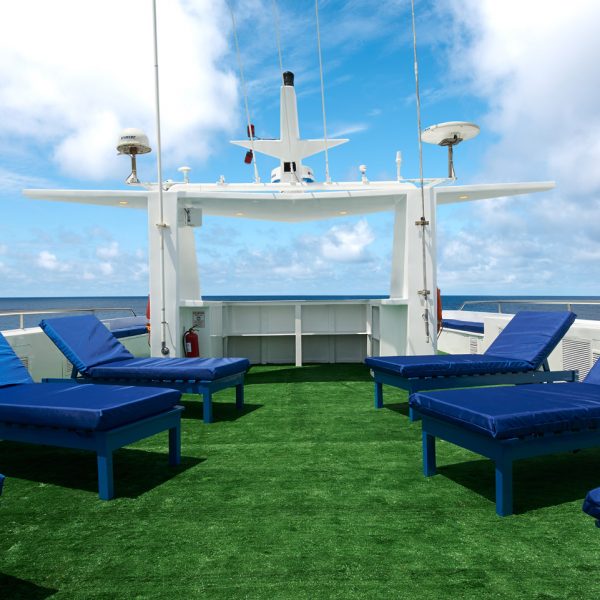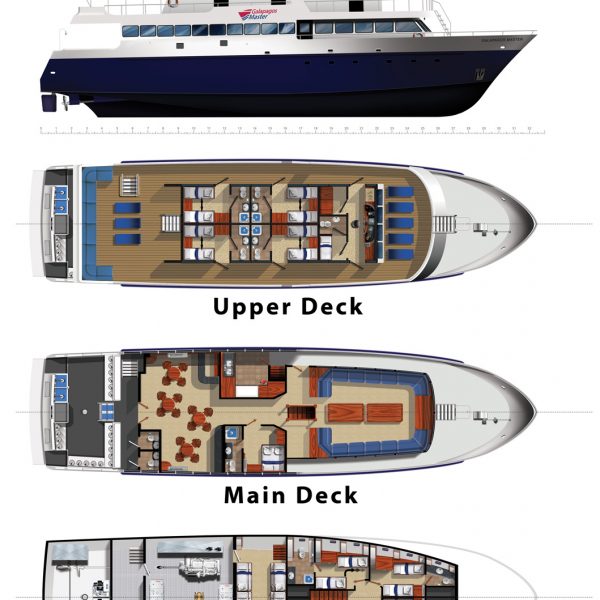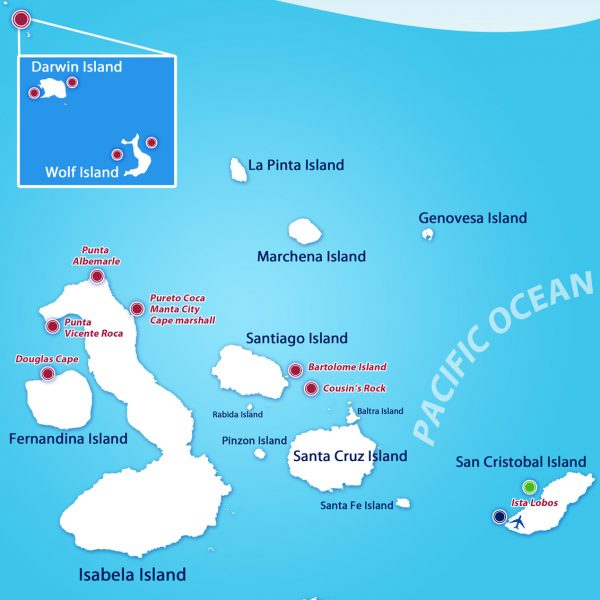The Yacht
Built in 2004 (formerly known as Deep Blue) the yacht joined the Master Liveaboards brand in November 2014, after having gone through a full refit. Communal areas comprise of a spacious indoor lounge, on the middle level, with cushioned bench seating and plasma screen for movie and photo viewing. Adjacent to the lounge is the indoor dining area complete with cocktail bar.
An indoor camera set-up station, with numerous charging points (US round pin plug) and storage drawers is situated to the rear providing ample room for a full photography charter group. Further camera preparation areas can be found on the rear deck next to the dive deck.
The upper level has shaded outdoor bench seating with cushioned loungers from where guests can enjoy the fresh air and views of The Galapagos. For those who enjoy to relax in the sun there is the top level sun-deck or upper level bow area with additional cushioned loungers provided for your comfort. Guests are free to take advantage of the gangways on both the port and starboard sides to walk around the yacht or visit the Captain in his bridge on the upper deck.
The dive equipment set up is found on the aft deck of the lower level. There are individual set up areas, with under bench storage for all your personal items. Rinse tanks are conveniently located for washing dive equipment and camera gear, while there are 2 shower heads for those wishing for a quick post-dive rinse down. A further 2 deck heads are situated on the starboard side of the boat, just in front of the salon entrance.
Diving the Galapagos
The Galapagos is one of those rare places where you can dive through hundreds of hammerhead sharks to find a whale shark cruising along. Toss in silky sharks, sea turtles, giant morays and schooling fish in their thousands… And that’s just the first dive at Darwin! At Wolf Island you can expect huge Galapagos sharks and eagle rays up close while dives at Cabo Marshall will put you face to face with giant manta rays and inside a school of millions of black-striped salemas. Mola mola (sunfish) may be seen in the depths too. Macro life is plentiful. Black coral bushes shelter seahorses, blennies, nudibranchs, hawkfish and frogfish. Sea iguanas are a unique sight, along with speedy penguins and playful sea lions. This is but a mere taste of why divers consistently proclaim the Galapagos to have the healthiest marine life in the Pacific.
Diving in the Galapagos can be challenging, even for the experienced diver. At many sites currents can be strong and visibility may diminish due to currents and an influx of nutrients. We highly recommend guests have training beyond beginner level and a minimum experience of 50 dives, preferably in similar conditions. Water temperature ranges from 21-30°C (70-86°F) between December and May when manta rays are more commonly sighted. However it drops to an average of 16-24°C (60-75°F) between June and November when the Humboldt Current comes up from the south, bringing with it plankton; making this the best time for seeing whale sharks. Thermoclines can also be expected and divers are advised to bring suitable thermal protection.
On a typical day you will be offered up to 4 day dives on The Galapagos Master, however the 4th day dive may be substituted for a night dive when the boat is anchored within a sheltered cove. A 7-night itinerary provides for between 18-20 dives, whilst during our 10-night itineraries, up to 30 dives will be possible.


